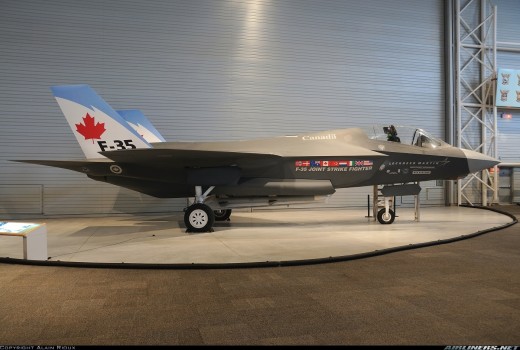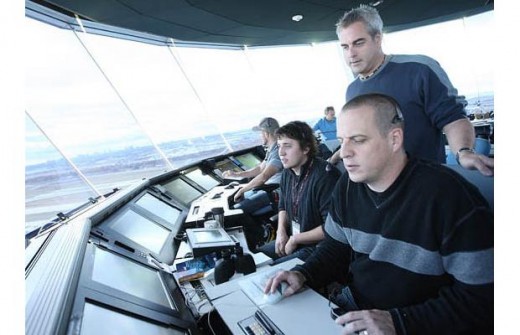 Scroll Down to see all of this week’s updates
Scroll Down to see all of this week’s updates
Fighter Replacement: What Now?

Prime Minister-designate Justin Trudeau is showing every sign of following through on his pledge to cancel Canada’s participation in the F-35 program and that will likely mean a three-way race for a less expensive and less capable aircraft to replace the CF-18.
The bonus is that the RCAF will probably end up with more airplanes.
Ruling out the F-35 (there may not be a legal way to keep it out of the bidding, however) effectively leaves the F/A-18 Super Hornet, Dassault’s Rafale and the Eurofighter as contenders for the contract. However, without the F-35 in the mix, Saab might rethink entering the race with its updated Gripen NG.
None of those options has the combination of stealth, surveillance and weapons capabilities that the F-35 and some other fifth generation designs from Russia and China have but Trudeau has said he doesn’t think Canada needs a fifth generation fighter because Canada won’t need to attack anything.
As if to punctuate that premise, one of Trudeau’s first acts after the election was to tell U.S. President Barack Obama that Canada will cease participation in the bombing campaign against ISIS targets in Iraq and Syria. That likely means the Aurora long-range patrol missions will also be halted.
There was no mention of the need to replace fixed wing search and rescue aircraft during the election but that will also be on the new PM’s plate.
U.S. Comes Calling on Nav Canada

Nav Canada has hosted more than a dozen delegations from the U.S. in recent months as Americans look at alternatives to their government owned and run airspace management system.
The U.S. Congress could, as early as November, consider bills to separate air traffic from the FAA. The current model being proposed would share many of the basic operating principles of Nav Canada, hence the interest.
Since user fees are a fundamental aspect of the non-profit corporation model used by Nav Canada, the notion is controversial in the U.S., especially in the general aviation community.
In fact, one of the current AOPA President Mark Baker’s first initiatives when he got the job in 2014 was to take a delegation to Ottawa to learn about privatized air traffic control. He later re-iterated his organization’s opposition to user fees, which they view as a irreversible first step toward ever increasing fees and bureaucracy. The system is now funded by direct taxation of avgas and jet fuel.
Since last year, according to the Wall Street Journal (subscription required), groups representing airlines, unions and aviation groups have met with Nav Canada Chairman John Crichton who unabashedly tells them the Canadian system is more efficient and flexible.
“This business of ours has evolved long past the time when government should be in it,” Crichton told the WSJ. “Governments are not suited to run…dynamic, high-tech, 24-hour businesses. When they try, they mess up.”
Although the user fee issue is likely behind the opposition, the most stated reason from opponents is that the Nav Canada model isn’t scalable to the much busier U.S. airspace.
Interestingly, the National Air Traffic Controllers Association shares that concern but its president Paul Rinaldi says he’s willing to consider it or just about anything else than the current politicized system that doesn’t enable long-term planning.
“The status quo is completely unacceptable,” Rinaldi told WSJ.
Cabin Smoke Forces Q400 Landing

A Porter Airlines Bombardier Q400 was forced to make an emergency landing in Sydney, Nova Scotia on Monday amid passenger complaints about the lack of onboard emergency masks.
The aircraft was on a flight from Halifax to St. John’s when smoke started filling the cabin from the front of the aircraft. The flight crew declared an emergency and headed for Sydney.
On the way down, the crew told passengers to breathe through the cloth headrest covers on the seats to mitigate the smoke exposure.
Some passengers wondered about the lack of drop-down masks but apparently confused their purpose. The masks are used in response to decompression of the cabin in aircraft that fly above 25,000 feet. The supplemental oxygen is needed because of the time it takes an aircraft to descend to breathable air at 14,000 feet.
In fact, it’s unlikely the crew would have deployed masks even if they were available. The oxygen would feed a fire and likely cause a lot more danger to the aircraft occupants than the smoke.
The source of the smoke hasn’t been released and Transport Canada is investigating.
Canadian Hoverboard Takes a Bow

A Montreal inventor has allowed a close-up look at his hoverboard prototype and shown off the growing enterprise that investor funding appears to be creating in an industrial area of the city.
Alexandru Duru has been working on the multi-copter design for years and has been flying it for almost two years but it wasn’t until the Guinness Book of World Records released video of a 2014 test hop that it became well known.
That video was shot from a distance and while it showed the device clearly enough, it didn’t satisfy some skeptics.
Duru took CBC along for a demonstration of the device in front of a small crowd of onlookers on a Quebec beach last week.
The resulting video showed Duru controlling it well, although the footage does show why all the flights have been over water. At one point a loose wire causes the rotors on one side of the device to fail and Duru tips into the river.
